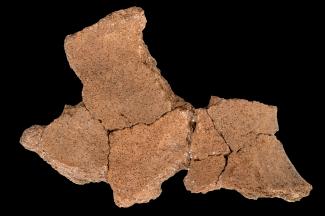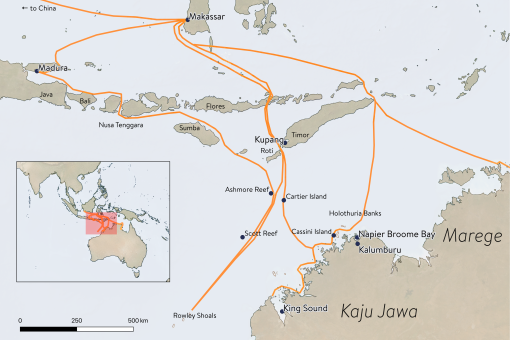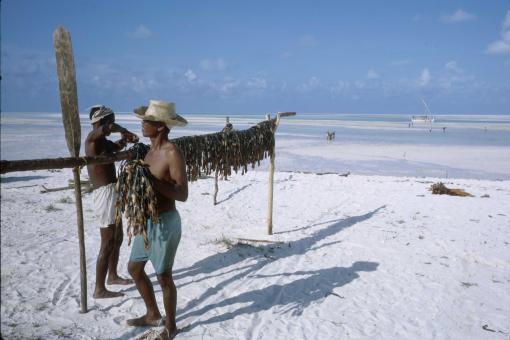Ceramic sherds and metal artefacts (including a fish hook and lead musket ball) found at fishing camps in northern Western Australia show the movement of Indonesian including Makassan seasonal fishers across the region. This archaeological collection comes from Tamarinda, Low Island and Klembei in the Kimberley.
Tamarinda trepanger camp
Excavations of Tamarinda by Western Australian Museum archaeologists in the 1960s, revealed hearths and smokehouses possibly for the preparation of trepang (sea cucumber, Thelenota ananas). Based in part on an 1823 Dutch coin, the camp was dated between 1825-1850. Nearby tamarind (Tamarindus indica) trees clearly pointed to the presence of Southeast Asian seasonal fishers.
Artefacts
Cooking pots brought to Napier Broome Bay onboard Asian boats or praus have been reconstructed from ceramic sherds found or excavated on shore. Mineral analysis of the clay has revealed Foraminifera fossils (marine species) and silicate, suggesting these vessels were made in island Southeast Asia from coastal and beach sediments. Other pottery sherds include coarse earthenware and Chinese porcelain.
Working with traditional custodians
Today’s excavations and research involve Kwini Balanggarra traditional custodians working with WA Museum and University of Western Australia archaeologists to explore possible interactions of local people with seasonal Indonesian visitors. As a part of this research, Kwini people are reconnecting with artefacts held in the Museum.

















